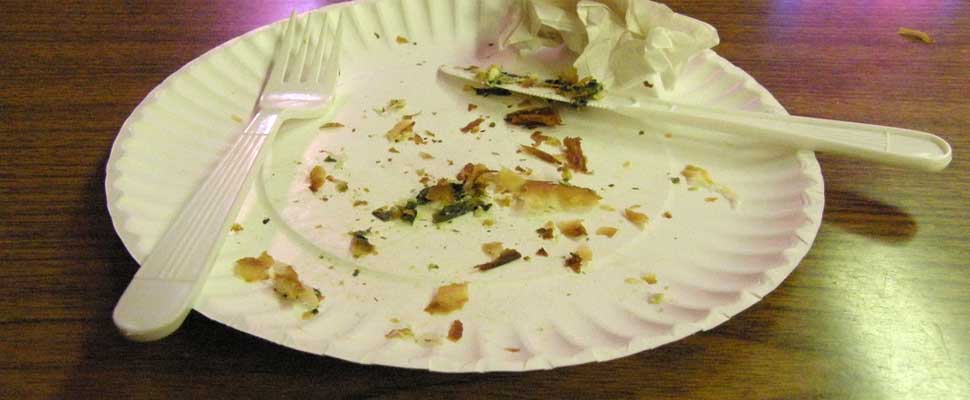From summer cookouts and family reunions to football viewing parties and holiday meals, disposable foodware is the common choice of convenience. Instead of cleaning up, just toss out paper plates, foam cups and plastic cutlery.
However, like most options in life, trade-offs exist and disposable doesn’t win in every comparison versus “real”, reusable foodware.
The by-the-numbers summary in this article about paper versus foam cups highlights some of the environmental impacts of disposable foodware. Do you know paper takes 20 years to decompose in a landfill while foam takes more than a million years? Do you know foam is created from petroleum sources while paper is created from trees and often coated with a thin petroleum-derived plastic layer? Do you know manufacturing paper uses nearly double the water as manufacturing foam? And while plastic foodware isn’t mentioned in this article, the magnitude of plastic waste is well-tracked and some researchers specifically question its impact on human health.
But waste reduction and environmental impacts aren’t the only benefit to reusable foodware. Here are some additional reasons to go real at home.
Food tastes better.
A research study indicated that our brains have an association between real cutlery and high-quality food. So if you want to impress your dinner guests or just enjoy your food more, go for real plates and cutlery.
Keep a free hand.
You know that feeling when you load too much food on a thin disposable plate? As the plate starts to bend, you start supporting it with both hands and wonder if you’ll make it to the table before the plate breaks.
Paper thin.
A big paper plate fail: when your knife accidentally cuts through the bottom of the saturated paper plate. Yikes! Maybe no one will notice that your meal is now partly on the table?
Extra.
Yes, reusable foodware requires cleaning, but disposable doesn’t come without extras: extra trips to the garbage can (to dispose of your disposables), extra trips to the grocery store (to buy your disposables) and extra pantry space taken up to store disposables.
Save money.
Though the upfront cost is higher, real tableware will last for years. A school system in Minnesota saved thousands by switching from disposable to reusable foodware. Plus, factor in energy and water savings. Disposable plates don’t require cleaning so, yes, you save water there. However, the amount of water and energy used in the manufacturing process of the disposable plate is higher-per-use than the reusable plate, which is manufactured once and can be used for years.
In some situations, disposable foodware certainly has a place as the best choice for that scenario, but the benefits of reusable are worth considering at your next cookout, reunion or party.
Photo credit: Image retrieved via Flickr user Dan4th Nicholas and shared under a Creative Commons license.
